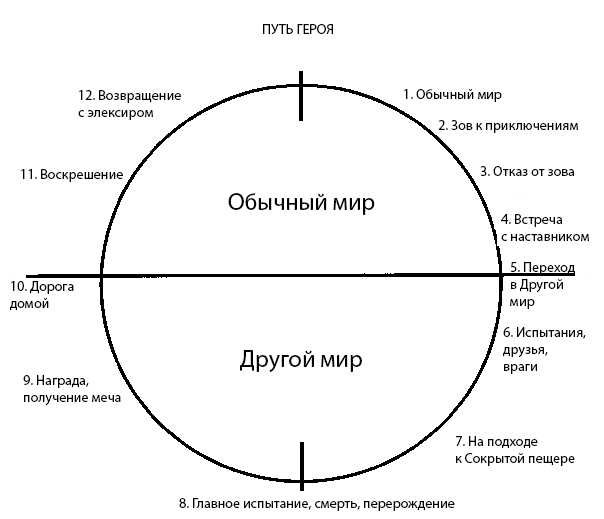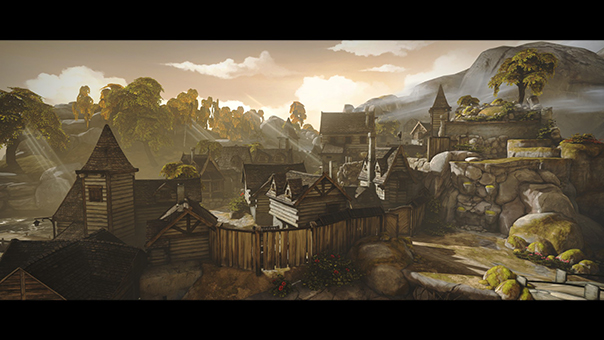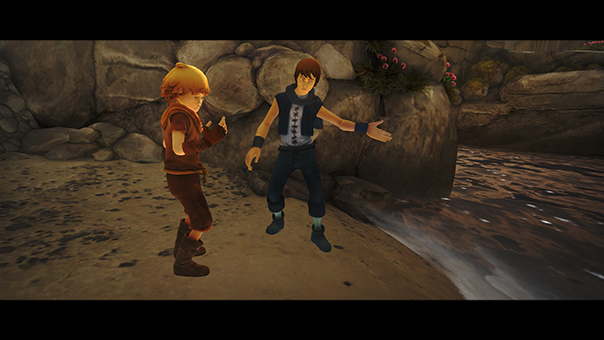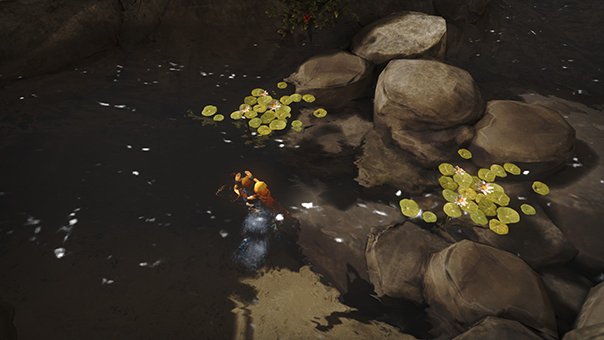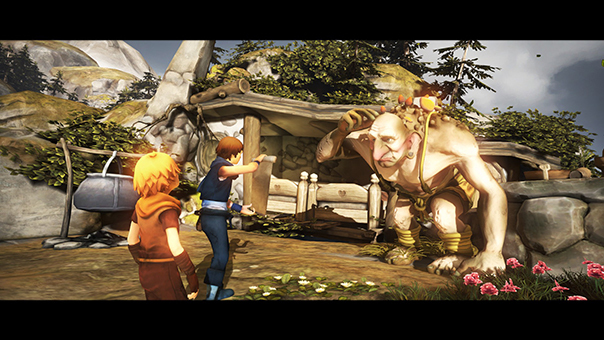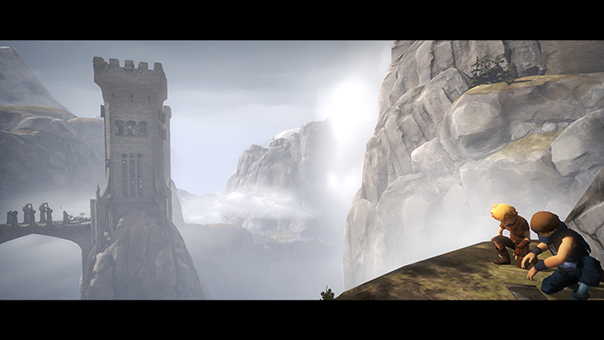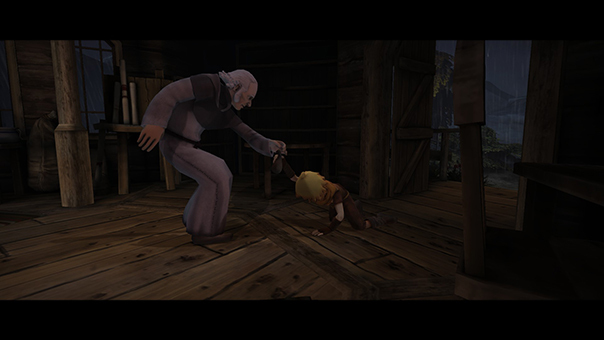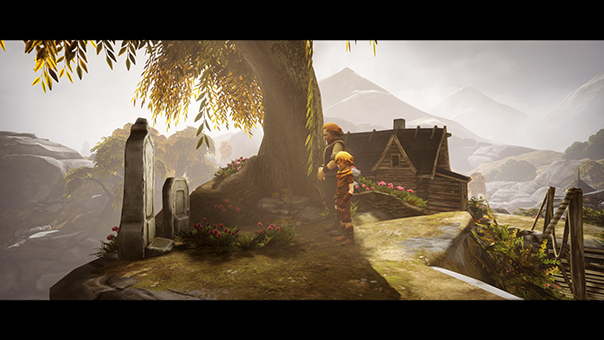"The Hero's Way" in Brothers: A Tale of Two Sons
Stanislav Kostyuk, a game designer at Ubisoft, continues to tell how exactly the narrative structure of the “Hero’s Path” is embodied in games. This time the topic of the analysis was Brothers: A Tale of Two Sons.
In this text, I will talk about Brothers: A Tale of Two Sons and how the monomyph structure invented by Campbell and reinterpreted by Vogler is embodied in this game. Please keep in mind that I will often refer to the previous post about Journey, so it’s better to read it first.
And now — let’s continue.
How the Vogler structure is embodied in Brothers: A Tale of Two Sons
Vogler interpreted the myth of the hero in a more streamlined and less specific way. Therefore, I think that his version as a tool for creating stories is much more convenient (and, in the end, it was invented for this purpose). The main principle — the hero begins the journey from a certain point and after a series of tests becomes a more perfect version of himself — remains the same. But due to the fact that the Vogler version is simpler, it is more versatile and imposes fewer restrictions.
1. The ordinary world
Vogler pays more attention to the Ordinary world and the original life of the protagonist to show how the character lived before the events began. Imagine Harry Potter and his life on Privet Drive or how Ezio and his family lived before everything started to spin.
In Brothers, the Ordinary world is a village where we are introduced to Nai, who will later become the main character of the “Hero’s Way”, and his older brother named Naya. Their mother drowned in the sea, and Nai feels guilty for not being able to save her.
2. The Call to Adventure
The heroes’ father is also in danger. He is terminally ill, and, according to the doctor, the only thing that can save him is water from the Tree of Life. Two brothers are on their way.
3. Refusal of the call
Just like in Campbell’s structure, in Vogler’s monomyph, the call for some reason cannot be accepted right away. Here I would like to note that the hero does not necessarily reject the call himself. Some entities may appear that do not allow it to be accepted. For example, in Harry Potter and the Philosopher’s Stone, this is the hero’s uncle, who repeatedly destroys letters from Hogwarts.
In Brothers, this role is played by a local bully who does everything to prevent the brothers from leaving the village. And also how Nai is afraid to swim because of what happened to his mother.
4. Meeting with a mentor
At this stage (not necessarily here — it may happen sooner or later), the hero needs help to move forward. He meets a mentor who will help him and give him useful advice, and also teach him how to behave in Another world. Like Hagrid, who came and literally took Harry into the magical world, where he told everything that he needed to know.
In Brothers, the role of mentor is played by Naya’s older brother. Although Naya has unique abilities — such as the ability to squeeze into narrow spaces — he still often needs Naya’s help. Naya helps her brother to jump further, pulls the levers, for which the younger one does not have enough strength to pull, but, most importantly, Naya lifts him on his shoulders when he needs to swim somewhere. And please remember that Nai cannot swim without the help of her brother. Later it will be beaten in an absolutely amazing way.
5. Transition to Another world
Just like in the original structure proposed by Campbell, at this point Vogler’s hero leaves the familiar Ordinary world and goes to Another world full of dangers. Like Harry Potter, who literally crosses the threshold on platform 9 ¾.
In Brothers, the heroes meet a troll. Before that, the brothers stayed in a familiar world — in the village and its surroundings — and here they meet with the unknown. The troll behaves friendly and helps the brothers get into a huge underground cave, from which the journey to Another world begins.
6. Trials, friends and enemies
In this part, the structures of Campbell and Vogler are particularly different from each other. Here the main plot development takes place. The hero meets friends and enemies, overcomes obstacles that come across on the way. At this stage, the hero gets acquainted with the Other world and its rules as he approaches the main goal. So, Harry Potter meets Ron and Hermione, finds an enemy in the person of Draco and learns about Voldemort. Meets with teachers, learns spells, finds out about the Philosopher’s Stone.
In Brothers, at this stage we are traveling in Another world — an underground cave with ogres, a dark forest, mountains and a castle where a giant lives. Here the brothers meet the griffin for the first time. Here it is necessary to pay attention that everyone whom the brothers meet on their way is absolutely unambiguous. Those who look friendly—for example, a troll, a kind scientist or a griffin —are really friends. Who looks like an enemy — wolves who want to eat you, ogres, dangerous trees — and there are enemies. For the next two stages of the journey, this is a very important point.
7. On the approach to the Hidden Cave
A hidden cave is either a location or just a plot twist, during which the hero will face either the most serious difficulties and dangers, or an internal conflict that will need to be overcome. At this stage, the hero prepares for the final battle or copes with the challenges. In “Harry Potter” at this point, the trio sneaks past Fluffy and faces various dangers on the way to the room where the Philosopher’s Stone is hidden.
In Brothers, this stage begins with Naya and Nai bumping into a girl who is about to be sacrificed. The brothers save her, and she agrees to show them the way to the Tree of Life. She leads them through the lake and through the city, where everything turned to ice in the middle of the battle, and an invisible guardian roars and devours everyone he can find.
Naya gradually falls in love with a kind girl who helps them. Do you remember the part where it was immediately clear who was who? While traveling with a girl, you inevitably begin to suspect something – she jumps too high, and sometimes it turns out that she is much stronger than an ordinary person.
8. Main test
At this stage, the hero comes face to face with death — a terrible danger or an internal crisis. To win, he will have to use all the skills he has acquired during the journey. Everything is at stake — the hero will either die or stay alive. In Harry Potter, this is the first face-to-face encounter with Voldemort, who is looking for the Philosopher’s Stone.
In Brothers, a girl leads the heroes into some kind of suspicious cave. That’s when it becomes clear that a terrible spider was hiding under her disguise. The spider catches the brothers, but they kill her. However, Naya, the older brother, is mortally wounded in battle.
9. Reward
After the hero has passed the Main test and overcome the most serious difficulties, he passes into a new quality, becomes a more perfect version of himself and receives a reward. This is not necessarily something tangible or even not necessarily a reward in the usual sense. The reward can be anything from an object, as in the case of the Philosopher’s Stone, which Harry got for his spiritual qualities, to knowledge or revelations.
In Brothers, the reward is water from the Tree of Life. Despite the fact that Naya is injured, both brothers reach the end of the path. Nai hurries to the Tree to get water, but does not have time to save Naya. This is a very sad moment — Nai says goodbye to her brother and buries him under the Tree of Life. Sometimes you have to pay for the reward.
10. The road home
The road home takes on different guises. In the direct sense, it is something opposite to the Call to adventure. The hero begins his journey into the Ordinary World, and along the way he may have to guard the reward. But often it is also a kind of tribute to the final stage of the Path. For example, in Assassin’s Creed II, Ezio, on his way to a goal (which is not really a return to the Ordinary world at all), has to defend an Apple even after he has obtained it.
However, in Brothers, the road home is literally the way back to where it all started. The griffin, who lives in the Tree of Life, carries Nai back to his native village.
11. Resurrection
This is the culmination of the journey. The last and most dangerous fight of the hero with death. The point at which, after a metaphorical or real death and resurrection, the hero finally passes into a new state. In Harry Potter, this is the moment when Harry wakes up in the Hospital Wing (which is also a kind of resurrection) after receiving an award. Now he has become smarter, wiser, more experienced and has proved that he is worth something.
In Brothers, this is my most adored moment in the whole game, I love it to death. A storm is raging in the village. The water rises higher and higher. To get to the father, Nai needs to swim. But he did not overcome his fear — Naya always swam for him, and Nai just held on to his brother. But Naya is no longer with him, and Nai is still afraid to swim.
Here the narrative is embodied through management, and it’s just magical. The fact is that during the game you control two brothers — each has its own stick and a button for contextual actions. But at the moment when Nai is faced with the need to swim, you press the action button for the older brother, and a ghostly voice becomes audible, which encourages the younger one and helps him overcome his fears.
After the water is left behind, you reach the stage of the game that took place at the very beginning. There are obstacles that Naya overcame — pulling levers, helping his brother jump higher. Now Nai has to cope on his own. And he copes with the invisible help of his older brother as soon as you press the action button of Naya.
12. Return with a reward
This is the final part of the journey, in which the hero returns home completely different. He has learned a lot, faced dangers, and is now ready to start a new chapter in his life. In Harry Potter, this part corresponds to the moment when Harry gets on the train that takes him home.
In Brothers, Nai goes to the doctor with water from the Tree of Life. His father is saved. But this is a bitter joy, because two family members are not with them. Nevertheless, Nai completed the journey, grew up as a person, learned a lot about friendship and trust and conquered his most important fear — thanks to his older brother.
This concludes the analysis of the “Hero’s Way” and two variations of this structure, one of which belongs to Campbell, and the second to Vogler. I hope you liked the text and found it valuable and useful. The structure can be found in many books, movies and games. Examples, of course, are Journey and Brothers. And Uncharted, Assassin’s Creed, Warcraft and many, many other games. And I think we will see this structure more than once, because the very idea of how someone changes after overcoming trials is, in general, very close to human nature.
Remember that this is nothing more than a tool. And, as with any tool, it is not the fact of its use that is important, but how exactly it is used. The structure is often criticized for the fact that because of it all the plots become similar to each other. But I disagree. There are many completely different and unique stories based on this idea. So the “Hero’s Way” can be very useful.
It should also be mentioned that the “Hero’s Way” can be turned inside out. For example, at its core, the Campaign for People in Warcraft 3 is a “Hero’s Way”. But it’s about how Arthas becomes a villain. All the stages are still in place, from meeting with the mentor—Uther to receiving the rune blade Icy Sorrow as a reward for the test and to returning home with the elixir, where he kills King Terenas.
Assassin’s Creed III perverts the “Hero’s Way” in its own way. The structure is still in place, but the main character Connor loses almost everything he holds dear, and … in general, it doesn’t end well.
And even if the structure is reproduced verbatim, it will give so many different possibilities and options, due to which the plot can stand out among its own kind, that it is unlikely that your story will be like any other, if you approach it correctly.
You can subscribe to the author’s Twitter account by following the link.
A source: stanislavcostiuc.com
Translated by Irina Smirnova

